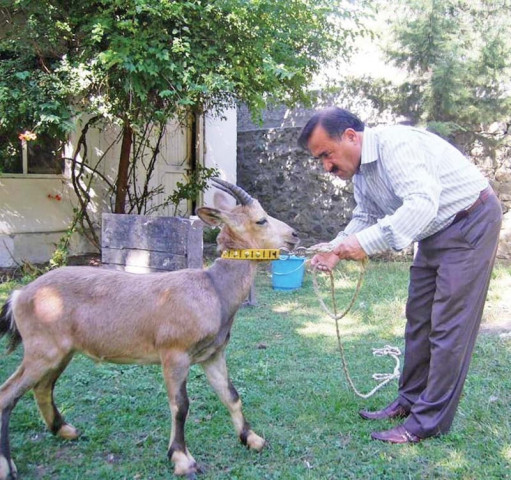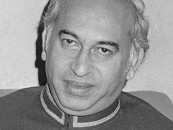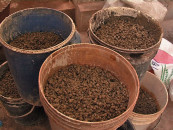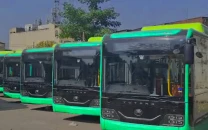Saving Pakistan’s ibex hunting programme
Trophy hunting programme is showing signs of corruption that need to be nipped in the bud

An official from the wildlife department looks after a baby ibex. PHOTO: EXPRESS
However, ethnographic research in the communities involved in this programme in the Hunza district has unearthed some disturbing details.
Each year in June the Gilgit-Baltistan (G-B) wildlife department holds an auction for hunting permits for the coming season (November to March). The permits are issued to individuals and outfitters for hunting in participating communities throughout G-B. About 60 permits are issued for ibex hunts. But, for the last two years, by the time the hunting season ends in March the actual number of ibex hunts that have taken place are more than 100: about twice as many that are approved at the auction in the previous June. That is, additional permits are issued after the initial auction.
The question is why do almost twice as many ibex hunts take place over the approved quota of 60? There are two reasons for this, according to one G-B Wildlife Department official who spoke on the condition of anonymity.
First, when the hunting season starts in November, the G-B wildlife department starts getting requests from influential people from down country who did not apply during the auction for a hunting permit. So they have to issue extra permits.
The second reason is that in the last two years the G-B wildlife department started issuing permits to local G-B residents at a concessionary rate.
Previously, permits were only issued to foreign nationals who paid $3,000-5,000 and to Pakistan nationals who paid around Rs200,000 ($1,276) per permit. Since 2017, a third category of hunters – residents of G-B – has been introduced who are charged only about Rs100,000-150,000 ($638-957) for an ibex permit. The low cost of these permits has increased demand, including after the June auction.
The Gilgit wildlife department officials say that the problem of excess hunting permits is primarily because of requests from influential people from down country. However, officials of the Ministry of Climate Change, Islamabad, claim that it is not so much the pressure from influential people from down country that is driving excess hunting as the unchecked issuance of licenses to G-B residents.
Hidden corruption
This current situation has led to a potential ecological problem. The initial quota of 60 trophies is, supposedly, based on an assessment of how many trophy sized animals – with horns of at least 38 inches (almost one metre) – are available to be shot that will not threaten the overall population.
However, all the one hundred ibexes that are eventually shot during season are officially designated as legal size. There seems to be a discrepancy here. Unless the initial quote is a serious underestimate of availability of trophy sized animals, then surely some of the 100 trophies shot are not in fact legal size.
The GB wildlife guards, who accompany the hunters, are intentionally inaccurately reporting trophy sizes. This is especially true in the case when the hunters are G-B residents because, according to one local community member, G-B residents are not interested in trophy, but the meat – so it is not important to them whether the trophy is large or not. If this is true, there is a serious threat to the overall ibex population in G-B through over-hunting, that is being systematically hidden by the very guards who are supposed to be monitoring the size of the trophies hunted.
Another existing problem which is exacerbated by the increased demand for permits is the uneven distribution of revenues to the villages. People applying for permits like to hunt where they do not have to do a strenuous trek to reach their quarry. There are certain villages in upper Hunza where it is notoriously easy to shoot an ibex. In places such as Khyber and villages further up near Khunjerab National Park, one can shoot an ibex without even coming out of one’s vehicle. In these villages, the actual number of hunts that take place at the end of the season doubles the quota set at the beginning of the season. For example, in June when the quota is auctioned Khyber village gets about 10 licenses, but in March when the season ends, the number of hunts that have taken place are 25. The same situation prevails in at Khunjerab village.
The local communities are also not happy with the current situation. Some community members said they have explicitly told the wildlife department not to bring local G-B hunters to their villages. They said that they want either a foreign hunter or a non-GB Pakistani hunter. The reason for this preference is simple given that they get a much larger amount of money from foreign hunters. In Khunjerab the idea is being discussed of banning trophy hunting altogether and in its stead initiate ecotourism based on wildlife viewing. They argue that the population of ibex in their areas have increased to an extent that it has become feasible economically to start shooting wildlife with a camera rather than a rifle.
The story first appeared on The Third Pole



















COMMENTS
Comments are moderated and generally will be posted if they are on-topic and not abusive.
For more information, please see our Comments FAQ